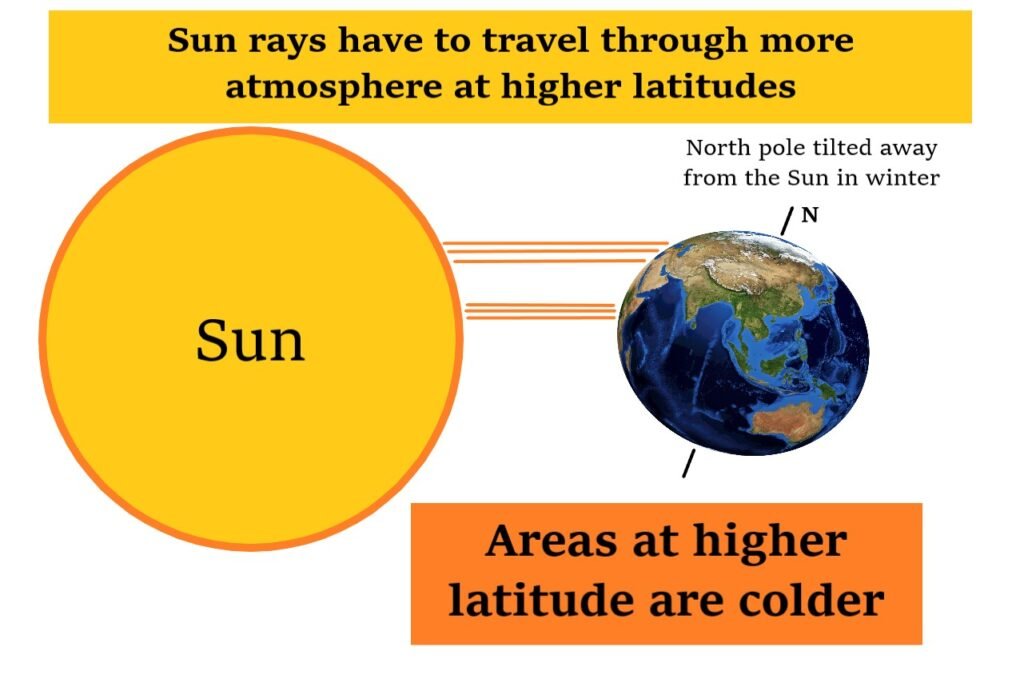As the winters arrive, the temperature in Northern India starts to drop. The southern parts of India, on the other hand, remain comparatively warmer. Why is north India colder than south India in the winters? Let’s learn.
Why North India is colder than South India in the winters?
Generally, with the increase in latitude, the average annual temperature decreases. The northern parts of India are located at a higher latitude. They therefore have lower average annual temperatures.
The days in North India are relatively short in the winter season. Also, the sunlight has to travel through a lot of atmosphere before reaching the surface. This happens because, in the winters of the Northern Hemisphere, the North Pole is tilted away from the Sun. (In winters of the southern hemisphere, the south pole is tilted away from the sun).

In simple words, areas that are closer to the equator remain warmer. North India is colder than South India in winter because it is farther from the equator.
Secondly, southern India is warmer because of its proximity to the sea which moderates the temperature. As we move closer to the coast, the temperatures do not change much with the season. The average humidity in these areas is also relatively high.
Thirdly, because of the heavy snowfall in the Himalayas in the winter, the temperature drops further in North India. It can drop below freezing for a few days.
(Also read: Where does it rain the most in India? | Rainiest places in India)
Some areas that are at a higher elevation in southern India can be as cold as North India in the winter. Places like Ooty, Munnar, and Kodaikanal can get very cold during the winter season. These places even in summers are pleasant-cold because of higher elevation.

